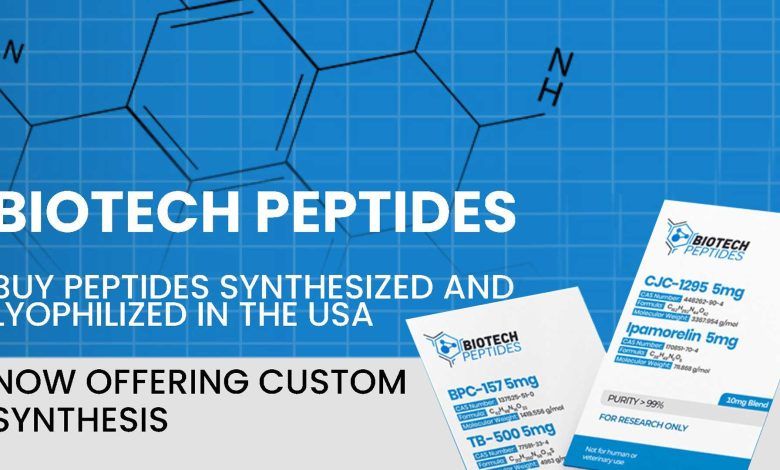
Peptides have transformed scientific inquiry, bridging gaps in understanding the intricate mechanisms that govern living research models. Ipamorelin, a synthetic pentapeptide, stands out among growth hormone secretagogues (GHS) due to its selective properties and potential implications across diverse research domains. As research purports its distinct mechanism of action, Ipamorelin is believed to offer a gateway into deeper investigations of hormonal regulation, metabolic dynamics, tissue regeneration, and cellular longevity.
Mechanism of Action: A Hypothetical Framework
Ipamorelin is theorized to exert its impact through selective interactions with the ghrelin receptor (GHSR-1a), a G-protein-coupled receptor associated with stimulating growth hormone (GH) release. Unlike other growth hormone secretagogues, Ipamorelin is thought to induce GH release while minimising engagement with other hormonal pathways such as cortisol and prolactin. This hypothesized precision has spurred interest in the peptide’s selective impacts on physiological processes. Studies suggest that Ipamorelin may be a critical tool for studying hormonal regulation and receptor-specific signalling within organisms by focusing solely on GH secretion.
Metabolic Potential and Energy Dynamics Research
Growth hormones have long been associated with metabolic regulation, influencing key energy expenditure, lipid breakdown, and nutrient signalling pathways. Research indicates that Ipamorelin’s selective stimulation of GH release might make it an ideal candidate for studies delving into metabolic responses. Investigations purport that the peptide-induced GH secretion may support lipolysis, breaking stored fat into usable energy, and fat oxidation, an integral mechanism for maintaining energy balance. Speculative studies may explore how Ipamorelin may impact glucose homeostasis and insulin sensitivity, offering insights into the metabolic adaptations necessary for sustaining energy equilibrium in organisms.
The peptide’s potential implications extend to investigating mitochondrial function, a critical aspect of energy dynamics. Growth hormones have been theorized to contribute to mitochondrial biogenesis, the process by which cells generate new mitochondria. Research indicates that Ipamorelin may provide researchers with a tool to hypothesize and analyse how GH-induced mitochondrial activity impacts cellular energy production and metabolic resilience.
Tissue and Cellular Research
One of the most compelling research areas surrounding Ipamorelin is its proposed impacts on tissue regeneration and cellular repair. Growth hormone is hypothesized to play a vital role in promoting cell differentiation, proliferation, and survival, all of which are integral to the repair of damaged tissues. Ipamorelin might be utilised in studies to understand how supported GH secretion impacts skeletal muscles, tendons, ligaments, and cartilage recovery. For instance, investigations purport that the peptide may support the signalling pathways necessary for tissue healing, including activating stem cells and synthesising extracellular matrix proteins.
The peptide’s potential implications in regenerative science may be far-reaching. It has been hypothesized that Ipamorelin might be leveraged in research exploring the development of bioengineered tissues, where cellular growth and repair are foundational. Furthermore, studies may investigate its potential role in wound healing, particularly in challenging environments with impaired tissue regeneration.
Cellular Ageing and Longevity Research
Cellular ging is a multifaceted biological process impacted by cellular repair mechanisms, oxidative stress, and genetic factors. Ipamorelin’s alleged interaction with growth hormone receptors has prompted speculation regarding its potential impacts on cellular ageing and longevity. Research indicates that GH secretion might support cellular repair mechanisms by enhancing protein synthesis, reducing oxidative damage, and modulating telomere dynamics—the protective caps at the ends of chromosomes.
Telomere length is an area of great interest in cellular ageing research, as shorter telomeres are associated with reduced cellular resilience. Findings imply that Ipamorelin might provide a framework for studying how GH-induced telomere maintenance impacts cellular longevity and organismal vitality. Additionally, investigations purport that the peptide may contribute to understanding the signalling pathways responsible for combating age-related declines in cellular function.
Synergy with Other Peptides
The hypothesized impacts of Ipamorelin might be further amplified when explored in combination with other peptides. For instance, Growth Hormone-Releasing Peptide-2 (GHRP-2) and CJC-1295 have been proposed as complementary compounds that may support Ipamorelin’s properties. GHRP-2 is theorized to increase the amplitude of GH release, while CJC-1295 seems to extend the duration of receptor activation. Together, these peptides offer researchers new avenues for studying hormonal regulation and receptor dynamics.
It has been theorized that this synergy might prove valuable in tissue regeneration and metabolic studies involving multiple signalling pathways. Ipamorelin may be a selective agent in these combinations, ensuring targeted GH secretion while other peptides modulate ancillary hormonal processes.
Expanding the Boundaries of Peptide Research
The peptide’s receptor selectivity and hypothesized impacts present a promising landscape for future research. Scientists speculate that Ipamorelin might be a critical tool for advancing studies in regenerative science, metabolic regulation, cellular ageing research, and cellular signaling. Its distinct mechanism of action may provide researchers with a platform to investigate receptor-specific interactions and hormonal adaptations.
Beyond its physiological implications, Ipamorelin might be utilized in experimental studies to understand peptide stability, degradation, and bioavailability. Such investigations may pave the way for novel exposure systems and optimized peptide designs, enabling broader research implications.
Conclusion
Ipamorelin represents an intriguing subject for scientific inquiry, with its speculative properties spanning multiple domains. The peptide’s selective interaction with growth hormone receptors offers researchers a unique perspective on hormonal regulation, metabolism, tissue repair, and ageing. While much remains to be uncovered, the ongoing exploration of Ipamorelin underscores its significance in unveiling new dimensions of peptide-based research. Visit Biotech Peptides for the highest-quality research compounds.
References
[i] Bowers, C. Y. (1998). Ipamorelin, the first selective growth hormone secretagogue. European Journal of Endocrinology, 139(6), 552–561. [ii] Ankersen, M., Johansen, N. L., Madsen, K., Hansen, B. S., Raun, K., Nielsen, K. K., … & Andersen, P. H. (1998). A new series of highly potent growth hormone-releasing peptides derived from ipamorelin. Journal of Medicinal Chemistry, 41(19), 3699–3704. [iii] Ghigo, E., Arvat, E., Muccioli, G., & Camanni, F. (1997). Growth hormone-releasing peptides. European Journal of Endocrinology, 136(4), 445–460. [iv] Blake, A. D., & Smith, R. G. (1991). Desensitization studies using perifused rat pituitary cells show that growth hormone-releasing hormone and His-D-Trp-Ala-Trp-D-Phe-Lys-NH2 stimulate growth hormone release through distinct receptor sites. Journal of Endocrinology, 129(1), 11–19. [v] Doi, N., Hirotani, C., Ukai, K., Shimada, O., Okuno, T., Kurasaki, S., … & Chihara, K. (2004). Pharmacological characteristics of KP-102 (GHRP-2), a potent growth hormone-releasing peptide. Arzneimittelforschung, 54(12), 857–867.




